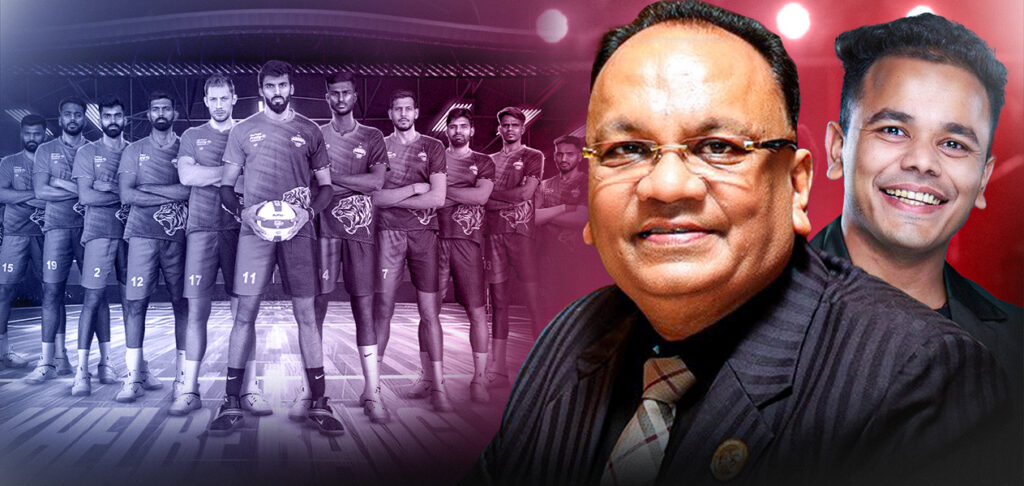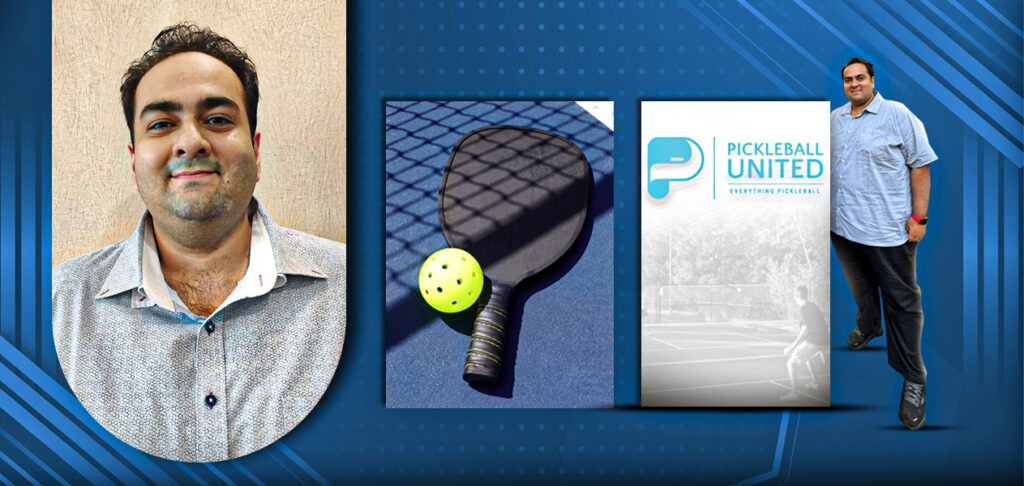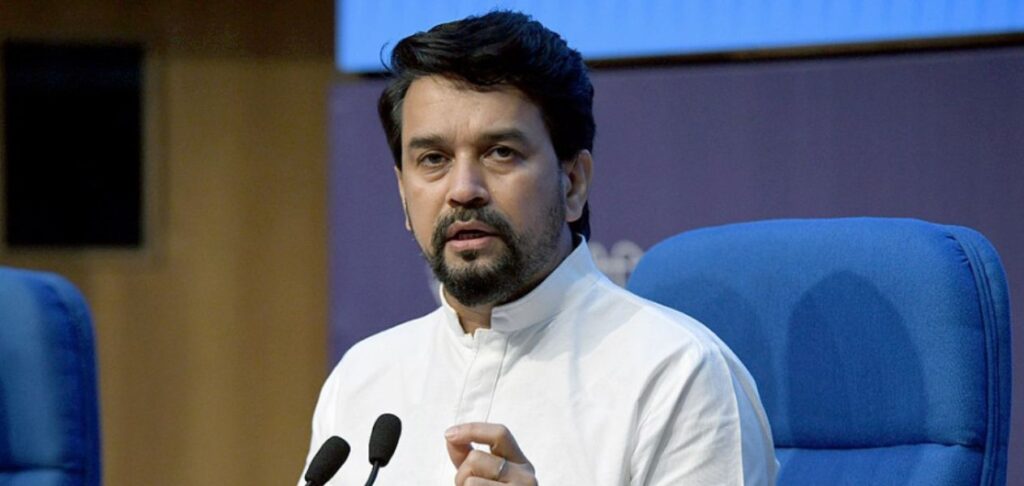It started in the streets of Hyderabad before weaving its way through the world, gathering riches on its way. The story of Sania Mirza’s tennis journey is one of the greatest ever told irrespective of whether it ends with a seventh Grand Slam title or not. It is undoubtedly one of the greatest stories in tennis history, and a good run in the US Open would certainly be a fitting final chapter in the career of an assuming woman of immense talent and mental fortitude who has firmly added her name among some of the legends of the game over the last two decades.
With six Grand Slam titles—including three mixed doubles titles—to go along with her 43 WTA titles, Mirza’s success and achievements cement her place as one of the greatest-ever Indian tennis players to take the court, something the six-year-old prodigy she once was could not have dreamed of as she tirelessly worked with a racquet in her hand in the local courts of Nizam’s Club in Hyderabad.
The heart of the matter
The 35-year-old tennis star had announced earlier this year her retirement plans at the Australian Open. Mirza reportedly said that she would be hanging up her racquet at the end of the 2022 season as her body was “wearing down” and her motivation and energy for the everyday grind were not the same anymore.
“There’s a bunch of reasons for it. I do feel my recovery is taking longer and considering my son is three years old, I do feel I am putting him at risk by travelling so much with him. Unfortunately, the pandemic is making us take certain decisions for the well-being of ourselves and family,” Mirza had said at the Australian Open. She further added, “Also, my body is wearing down. My knee was really hurting today and I’m not saying that’s the reason we lost but I do think that it is taking time to recover as I’m getting older.”
After crashing out in the quarter-final stages of the mixed doubles category in this year’s Australian Open, Sania and her partner (Ivan Dodig) were humbled in the second round of the French Open. Thus, for Wimbledon 2022, Mirza paired up with Mate Pavi? in the mixed doubles event and were given a bye for the first round after being seeded as the sixth-best pairing. They faced the unseeded pairing of Georgia’s Natela Dzalamidze and Spain’s David Vega Hernández in the second round, which they won in three sets courtesy of a super tie-breaker 6-4, 3-6, 7-6 (10-3) in 1 hour 58 minutes.
The two got another bye in the Round of 16 after Taiwan’s Latisha Chan and Croatia’s Ivan Dodig failed to show up for the fixture, enabling Mirza to reach her second Grand Slam quarter-finals in 2022. Facing a formidable opponent in the form of the fourth-seeded pairing of Australia’s John Peers and Canada’s Gabriela Dabrowski, Mirza and Pavi? shone through as they caused an upset with a 6-4, 3-6, 7-5 win.
The pair were just a game away from making it to the final, one match away from claiming a seventh Grand Slam title, something that was out of the reckoning when Mirza announced her retirement earlier this year, but successive injury time-outs—especially for Mirza—meant the going got difficult the further the match went, eventually ending in a defeat for the Indian.
Childhood and first taste of success in tennis
Sania was born on 15 November 1986 in Mumbai to Hyderabadi Muslim parents Imran Mirza, a sports journalist, and his wife Naseema, who worked in a printing business. Shortly after her birth, Mirza’s family moved to Hyderabad, where she and her sister Anam were raised in a religious Sunni Muslim family. She took up tennis at the young age of six, although reportedly the local club didn’t even want to let her on the court, citing she was too small and couldn’t even hold a racquet. But just six months down the line, the coaches called her parents and informed them that they had never seen a child progress so quickly. It is also worth mentioning that Sania’s father was her leading coach for a very long time.
Sania turned professional in 2003 under her father’s coaching and won 10 singles and 13 doubles titles as a junior player. She won the 2003 Wimbledon Championships Girl’s Doubles title partnering with Russia’s Alisa Kleybanova. She also reached the semi-finals of the 2003 US Open Girl’s Doubles with Sanaa Bhambri.
In 2002, Mirza helped India win a bronze medal in the mixed doubles events at the 2002 Asian Games in Busan, partnering with Leander Paes. In February 2003, she made her Women’s Tennis Association (WTA) debut at the AP Tourism Hyderabad Open as a wildcard entrant but lost her first-round tie in three sets. She also picked up four gold medals at the 2003 Afro-Asian Games in Hyderabad.
Early WTA Tour and Grand Slam success
In 2004, at her hometown event, the 2004 AP Tourism Hyderabad Open, Mirza was a wildcard entrant and gave the then fourth-seed and eventual champion Nicole Pratt a good account in the first round, although she lost in three sets. However, she won her first WTA title in the women’s doubles event in the same tournament, partnering with South Africa’s Liezel Huber. In the end, she ended her 2004 campaign with one WTA doubles title and 6 ITF singles titles.
Mirza started her 2005 season on a promising note by reaching the third round in the singles event of the Australian Open, where she lost to eventual champion Serena Williams. In February, she became the first-ever Indian woman to win a singles WTA title by winning the 2005 AP Tourism Hyderabad Open, beating ninth-seeded Alona Bondarenko in the final. Her best performance that year, however, came in the US Open, where she reached the Round of 16, becoming the first Indian to ever go this deep in a singles Grand Slam event. Thus, thanks to a successful 2005 campaign, Sania was named the WTA Newcomer of the Year.
The 2006 Australian Open saw the then-rising Indian tennis star getting seeded for the first time, which also made her the first-ever Indian to be seeded in a singles Grand Slam event, though she lost in the first round to Michaëlla Krajicek. Her second disappointment of 2006 came in Bangalore, where she was the top seed and the defending champion in the singles event but lost in the second round to Camille Pin, though she made up for her blunder in the singles event by going all the way in the doubles event with Huber. She won another doubles title at the Sunfeast Open, where she also managed to make it through to the semi-finals in the singles event.
Although her performances in the Grand Slam events in 2006 were below standard compared to her 2005 outings, Mirza managed to notch up three top-ten wins against Svetlana Kuznetsova, Nadia Petrova and Martina Hingis, while in December, she also picked up three medals at the Doha Asian Games: gold in the mixed doubles event, silver in the women’s singles event, and another silver in the women’s team event.
Rising through the ranks and first Grand Slam title
The year 2007 started on a really bright note for Mirza. She made the semis in Hobart and Pattaya, reached the second round at the Australian Open, and made it to the quarter-finals in Bangalore. Her performances in Grand Slam singles events did not improve, however, as she crashed out in the second rounds of both the French Open and Wimbledon. That said, she did enjoy her best singles run in the summer hard-court season. Mirza reached the quarter-finals in San Diego, the semi-finals in Cincinnati, and the final in Stanford. In the doubles events, she fared much better as she managed to win four titles that calendar year. While her doubles game improved, she also reached her highest singles ranking of World No. 27 following the hard-court season.
The start to 2008 was nothing short of spectacular for Mirza, as she looked in a really good rhythm despite losing in the quarter-finals of the singles event in Hobart and reaching the third round of the Australian Open, where she was no match against the eighth-seeded Venus Williams. However, she translated that form to her doubles game–especially the mixed doubles where Mirza and Mahesh Bhupati made it to the finals but were humbled by the duo of Sun Tiantian and Nenad Zimonji? in straight sets. That was the highest of highs that year for Mirza as she struggled with a slew of injuries throughout the year, pulling out of crucial tournaments like the French Open and Wimbledon, while also having to retire from the 2008 Beijing Olympics singles event with a wrist injury.
Following a torrid 2008 season, Sania started off her 2009 campaign with a doubles event in Hobart, where she reached the quarter-finals. At the 2009 Australian Open, she lost in the second round of the singles event and then crashed out in the first round of the women’s doubles event playing alongside Vania King. However, following their first taste of Grand Slam final in 2008, the Sania-Bhupati pairing again reached the final of the mixed doubles event, but this time they outplayed the duo of Nathalie Dechy and Andy Ram to win their first Grand Slam title as a pair — Mirza’s first-ever.
This first title gave Sania the push she needed as she reached the final of the singles event at the Pattaya Women’s Open while also making the semis in the doubles event. Although her singles performances nose-dived a bit from thereon, Mirza and her doubles partner Chuang Chia-Jung made the semis at the Miami Masters (WTA 1000 event) before winning the MSP Group Championships ahead of the French Open. However, Mirza failed to carry that momentum throughout the rest of the season as she got knocked out in first round of the French Open, made the second round of the singles event at Wimbledon, while also getting knocked out in the second round of the doubles and mixed-doubles events at both Wimbledon and the US Open respectively. Mirza ended the year with a semi-final run in Osaka, where she lost to Francesca Schiavone.
Controversies surrounding her belief and marriage
Sania appeared on the cover of the Time magazine’s special issue in 2005. She was even named among the top 100 most influential people by the same magazine in 2016. Thus, in a tribute to her, for Times, Indian cricket legend Sachin Tendulkar wrote, “The Mirzas probably knew what the future held for their daughter. Her name, Sania, means brilliance…Sania’s strength, confidence and resilience reach beyond Tennis. She has inspired a generation of Indians to pursue their dreams – and to realise that they can also be the best.”
However, beyond this praise is a dark corner of India’s ultra-nationalism where Mirza has often been asked to prove her patriotism. Why? Because she’s a Muslim in a hindu-dominated country and is married to a cricketer from Pakistan, India’s geo-political adversary. Mirza has faced many unnecessary difficulties throughout her career, be it the controversies of her “wearing skirts” or being made the scapegoat in the Paes-Bhupati rivalry; the list goes long, through no fault of her own.
In 2006, some newspapers reported that Mirza declined to play doubles with Israeli tennis player Shahar Pe’er for fear of protests from the Indian Muslim community. In 2008, following repeated protests and threats before her matches, either due to her appearances and/or her beliefs, Mirza announced that she would stop appearing in Indian tennis tournaments, starting with the 2008 Bangalore Open, citing the series of controversies as being one of the main reasons along with further advice by her manager. However, Mirza did brush this aside when it came to national duty as she participated in the 2010 Commonwealth Games held in New Delhi.
In 2009, Mirza got engaged to Shoaib Malik. On 12 April 2010, she married Malik in a traditional Hyderabadi Muslim wedding ceremony at the Taj Krishna Hotel in Hyderabad, India, followed by Pakistani wedding customs for a mahr of ?61 lakh. Their walima ceremony was held in Sialkot, Pakistan. But, instead of celebrating the wedding of one of the country’s brightest daughters, negativity and hatred was thrown at her, only due to the fact that she was marrying a Pakistani. It always infuriated me when people criticised her over such personal topics like faith and marriage. The worst occurred when a teary-eyed Mirza had to go on national television to discuss the need to assert her Indianness to the public.
In 2014, Mirza was referred to as “Pakistan’s daughter-in-law” and unfit to be a representative of an Indian state after she was appointed Telangana’s brand ambassador. However, she usually never lets such negativity affect her immensely. The best way she gets her haters and trollers to shut up is by representing the Tricolour at various multi-nation events like the Asian Games and the Commonwealth Games, where she has picked up eight and two medals, respectively.
Injuries, struggles and doubles specialisation
Following her Grand Slam-winning season in 2009, Mirza’s start to the year 2010 was anything but decent. She made first-round exits at most of her singles events, namely, the ASB Classic in Auckland, the Hobart International, the Australian Open, the Pattaya Open (where she was the sixth-seed) and the Dubai Tennis Championships before another right wrist injury forced her to withdraw from the Sony Ericsson Open, the BNP Paribas Open, the Family Circle Cup as well as the following French Open.
Following her return at the Aegon Classic, where she again bowed out in the second round, Mirza lost out in the qualifying round in Eastbourne before getting dumped in the first round of Wimbledon. However, she did manage to finish runner-up at the Aegon GB Pro-Series in Wrexham. Her poor form continued, though, as she bowed out in the qualifying rounds of both the Cincinnati Masters and the Rogers Cup. Her best Grand Slam showing of the year was making the second round of the US Open, where she went down against the then-20th seed Anastasia Pavlyuchenkova. She had to wait till September to register her best singles outing, when she made the quarter-finals of the Guangzhou International Open. She also won her first doubles title in Guangzhou alongside Edina Gallovits and finished runner-up in Taipei with Hsieh Su-wei. At the 2010 Commonwealth Games, she won silver in the singles event, while in doubles, along with fellow Indian Rushmi Chakravarthi, she won bronze after beating compatriots Poojashree Venkatesha and Nirupama Sanjeev. Two months later, at the 2010 Asian Games, Sania won bronze in the singles event, while in mixed doubles, she partnered Vishnu Vardhan as the duo lost in the finals but sealed another silver for their country.
The year 2011 didn’t see her performances improve in the singles circuit, though Mirza’s performances in the doubles events were markedly outstanding. It was around this stage of her career that the focus started shifting more towards the doubles events. While Mirza’s best performance in a singles event came in San Diego, where she reached the quarter-finals (first time since 2007), her good form in the doubles events continued. She won her first Premier Mandatory title at Indian Wells along with Elena Vesnina, while the Indo-Russian duo won again at Stanford, beating the duo of Bethanie Mattek-Sands and Meghann Shaughnessy for the second time in a final that year.
However, Sania’s best showing of 2011 came in the French Open women’s doubles event where the duo of Mirza and Vesnina made it to the finals but lost out to the Czech duo of Andrea Hlavá?ková and Lucie Hradecká. Following that, the Indo-Russian duo also made it to the semi-finals of the women’s doubles event at Wimbledon, but injury scars to both Mirza and Vesnina meant the duo were knocked out in the Round of 16 at Flushing Meadows. Having regularly played singles events throughout the season, Mirza also climbed inside the top 60 rankings in the singles circuit.
2012 would turn out to be the year in which Mirza played her last singles match. She started her season at the ASB Classic in Auckland, where she ranked 104 in the world at the time. She lost in the qualifying rounds. As far as the doubles event was concerned, Mirza partnered with Vesnina and made it to the semi-finals. Going into the Australian Open, she was outplayed by Tsvetana Pironkova in the first round, while she reached her third Grand Slam semi-finals partnering with Elena Vesnina. In the mixed doubles event, Mirza and Bhupati reached the semi-finals before crashing out in a tense match.
At the PTT Pattaya Open, Sania won her first WTA main draw singles match since the 2011 French Open. She won her second-round match and made the quarter-finals, where she lost to Hsieh Su-Wei. In the doubles event, Mirza and her Australian partner Anastasia Rodionova defeated Taiwanese sisters Chan Hao-Ching and Chan Yung-Jan, with Mirza winning her 13th WTA title.
Next were Doha and Dubai in line. At the Qatar Ladies Open, Mirza and Vesnina lost out in Round 2, but the duo bounced back in Dubai as they finished runners-up to the #1 seeds Liezel Huber and Lisa Raymond.
Only playing doubles at the premier line-up of Indian Wells, Miami, and Charleston, Mirza reached the final, lost in round one, and made the quarter-finals respectively. She kick-started her European clay-court season in Estoril, where she was a semi-finalist alongside Rodionova. She exited in Round 2 in Madrid before winning in Brussels with Bethanie Mattek-Sands. Following their fine partnership, ahead of the French Open, Mattek-Sands and Mirza paired up for the women’s doubles but faced a shock Round 1 exit. However, in the mixed doubles event alongside Mahesh Bhupati, Mirza went all the way and won the Roland-Garros crown by defeating Santiago González of Mexico and Klaudia Jans-Ignacik of Poland in the final.
The 2012 Aegon International would prove to be Mirza’s final singles event, where she won the qualifying Round 1 against Lisa Whybourn before losing to Andrea Hlavá?ková. At Wimbledon, Mattek-Sands and Mirza crashed out in the third round after losing to the Williams sisters. The Olympics weren’t that great either, as Mirza and Rushmi Chakravarthi lost out to Chinese Taipei in the women’s doubles event, while the Mirza-Bhupati duo came undone against Belarus in the quarter-finals of the mixed doubles event.
Rise to the top and becoming World No. 1
Mirza kicked off her 2013 season with a title in Brisbane alongside Bethanie Mattek-Sands. However, the pair faced a shock exit in the first round of the Australian Open. In the mixed doubles event, Mirza paired up with the American Bob Bryan, but the duo lost out in the quarter-finals. At the Dubai internationals, Sania and Mattek-Sands emerged victorious in the women’s doubles event in February but had to retire in the Round of 16 at the French Open after winning the first set. The duo again crashed out in the Round of 16 at Wimbledon.
In the second leg of the season, Mirza enjoyed brief success partnering China’s Zheng Jie, winning a title in New Haven followed by a semi-final appearance at the US Open. Mirza then partnered with Cara Black for the rest of the season and found immediate success in her first event in Tokyo, winning the title. The duo won their second title in a row as they won the China Open, beating top seeds and the World No. 1 pairing of Sara Errani and Roberta Vinci en route. Thus, Mirza ended her 2013 campaign with five WTA titles.
Sania started 2014 with Cara Black as her women’s partner, and the duo–seeded sixth–reached the quarter-finals where they lost to top seeds and eventual champions Errani and Vinci. However, Mirza was more successful in the mixed doubles event. Pairing up with the Romanian Horia Tec?u, Sania made it to the final where the duo lost to Kristina Mladenovic and Daniel Nestor in straight sets. The duo made little progress over the next few tournaments before reaching their first WTA final of the year at the BNP Paribas Open, but they lost to Hsieh Su-wei and Peng Shuai. They also reached the final of the Porsche Tennis Grand Prix but once again finished runners-up to Errani and Vinci. They had to wait until the Portugal Open to lift their first WTA title of the year.
As the European clay-court season got underway, Mirza and Black made three consecutive quarter-final appearances at the Mutua Madrid Open, the Internazionali BNL d’Italia and the French Open. In the mixed doubles event, Tec?u and Mirza bowed out in only the second round. They started their grass-court season at the Aegon Classic, where they were knocked out in the semi-finals. At the Aegon International, they again reached the quarter-finals, but Wimbledon was a major disappointment as the duo crashed out in Round 2 against an unseeded pairing. The pair showed great fight at the US Open where they reached the semi-finals before getting knocked out by the pairing of Martina Hingis and Flavia Pennetta. In the mixed doubles event, Mirza paired up with the Portuguese Bruno Soares as the duo went all the way and won the title, with Sania winning her third mixed doubles Grand Slam title.
At the 2014 Asian Games in Incheon, Mirza won gold and bronze for her country. She paired up with Saketh Myneni to beat the Chinese duo of Hsien Yin Peng and Chan Hao-ching in the mixed doubles event to win gold, while the duo of Mirza and Prarthana Thombare won bronze in the women’s doubles events. Mirza and Cara Black, in the meantime, decided that the WTA Finals would be their last tournament together, and the duo saved the best for the last as they cruised to one of the biggest one-sided finals victories since the inception of the tournament in 1973.
Mirza started 2015 ranked No. 6 in the doubles rankings. After Cara Black decided to go for limited games in 2015, Mirza paired up with a former friend and partner, Bethanie Mattek-Sands. The duo won the Sydney International (Sania’s 23th WTA title) but failed to go past the second round of the Australian Open. Despite her early exit, Mirza re-entered the Top 5 rankings in doubles tennis. Ahead of the premier hard-court line-up of Indian Wells and Miami Masters, Sania paired up with Swiss star and legend Martina Hingis. The duo decimated their opponents en route to clinching the title in their first event together, and the dream run continued as they sealed the Miami Masters title too, without breaking a sweat. The pair then won their third consecutive title, the Family Circle Cup, and with that title, Mirza became the first Indian to be ranked World No. 1 in women’s doubles rankings.
The very next tournament would bring them back to reality, however, as they were routed in the first round of the Porsche Tennis Grand Prix. They reached the finals of the Italian Open but lost to Tímea Babos and Kristina Mladenovic. At the French Open, Hingis and Mirza bowed out in the quarter-finals, while in mixed doubles, where Mirza and Bruno Soares were the top seeds, they were knocked out in under 60 minutes in the first round by the unseeded pairing of Anna-Lena Grönefeld and Jean-Julien Rojer. Mirza and Hingis again reunited for the grass-court season as they finished semi-finalists at the Aegon International in Eastbourne. Sania and Hingis then took to the courts of Wimbledon as one of the favourites and lived up to their pre-tournament expectations as they went all the way, claiming their first Grand Slam title (as a pair) in a tight three-setter against the duo of Ekaterina Makarova and Elena Vesnina.
They made it into two more finals at the Rogers Cup and Western & Southern Open, but lost both. However, it still made them the first team to qualify for the WTA Tour Finals. At the US Open, the duo entered the women’s doubles event as the top seeds and went all the way to win their second Grand Slam of the season, losing not a single set throughout the tournament. Their undefeated run continued for the rest of the season as they won the Guangzhou International Women’s Open, the 2015 Wuhan Open and the China Open. They entered the season-ending WTA Tour Finals as heavy favourites and lived up to the billing once again, as Mirza won her second consecutive tour finals, ended the season with a 22-match winning streak and secured the year-end World No. 1 ranking, ending a very productive 2015 with ten WTA titles and two Grand Slams.
Mirza and Hingis kicked off 2016 with consecutive titles in Brisbane and Sydney. At the Australian Open, they were again seeded as the No. 1 pairing, and they delivered by winning their third Grand Slam in a row. Their next destination was the St. Petersburg Trophy, which they won, but at the Qatar Open, they suffered a shock defeat at the hands of Daria Kasatkina and Elena Vesnina. This loss ended Mirza and Hingis’ 41-match winning streak, which was the longest women’s doubles winning streak at the time. At Indian Wells, the duo suffered a shock second-round exit. Another exit followed at the Miami Open. Thus, with three defeats in their last five matches, the duo decided to take a break from tennis to work on their shortcomings. They started their clay-court season with a finals appearance at the Porsche Tennis Grand Prix. They made two more finals in consecutive tournaments: at the Madrid Open and Internazionali BNL d’Italia; they lost the former, while winning the latter by beating Makarova and Vesnina in a third-set tie-breaker.
Injuries, maternity leave, and a two-year hiatus
In August 2016, Mirza and Hingis announced their mutual decision to split as a team, citing their then-recent under-par performances. With the 2016 WTA Tour Finals in Singapore being their last event together, they lost in the semi-finals to Makarova and Vesnina in three sets with a super tie-breaker. Following that, Mirza struggled to find consistent partners for the rest of 2016 and the first half of 2017. She won two WTA titles with Barbora Strýcová (in 2016), while her only title in 2017 came in Brisbane with her friend Mattek-Sands, which ultimately resulted in her dropping out of the Top 5 rankings. Her last event of 2017 was the China Open, where she made it to the semi-finals partnering Peng Shuai. A knee injury sustained in October 2017 meant that she missed out on the final leg of 2017 and the first few months of 2018, including the Australian Open.
In February 2018, Mirza said that the same injury would likely keep her out of the court for another two months. In April, via an Instagram post, Sania announced that she was pregnant with her first child. In October, she delivered a baby boy, and in late 2018, Mirza announced that she hoped to return to professional tennis in time for the 2020 Summer Olympics.
Sania returns to drive India to glory
After spending more than two years off the professional court, Sania returned to tour at the Hobart International in 2020, playing alongside Nadiia Kichenok. The newly-formed team won the tournament by beating second seeds Peng Shuai and Zhang Shuai in the final. However, the duo crashed out in the first round of the Australian Open after Mirza suffered a calf injury during the match. She participated in the women’s doubles event at the rescheduled 2020 Tokyo Olympics Games alongside compatriot Ankita Raina, but the pairing lost out to Ukraine in the first round. This was Sania’s third consecutive exit in the women’s doubles first round in the Olympics.
Following the Olympics, Sania lost the finals of the Tennis in the Land tournament in the US. She partnered with Coco Vandeweghe in the 2021 US Open but bowed out in the first round. Mirza and Zhang Shuai then made it to the quarter-finals in Luxembourg before winning the title at the J&T Banka Ostrava Open in the Czech Republic. Following success at the WTA 250 event, Mirza suffered first-round exits in the following 500 and 1000 events in Chicago and Indian Wells respectively.
The year 2022 started with a semi-final appearance in Adelaide followed by a Round 1 exit at the Australian Open. During the middle-east leg in Dubai and Qatar, Mirza made the semi-finals at both events and rounded off the WTA 1000 events in Indian Wells and Miami with Round of 16 and quarter-final exits respectively.
Mirza and Lucie Hradecká then lost the final in Charleston before losing out in the semi-finals in Rome at the hands of Gabriela Dabrowski and Guiliana Olmos in straight sets. The duo again lost in the final in Strasbourg in a tight three-setter, which ended with a super tie-breaker. Roland-Garros didn’t prove to be successful either, as the duo crashed out in the Round of 16.
As the grass-court season kicked off, Mirza and Hradecká made it to the semi-finals in Birmingham, while at Wimbledon, in the mixed doubles event, Mirza and Mate Pavi? made it to the semi-finals, where they cruising at one stage and were just a game way from reaching the final, but they lost out in three sets, ultimately, as the balance of the game shifted dramatically following regular injury time-outs due to Mirza’s various niggles.
A final word
As a teenager, I fanboyed over her confidence, her resilience, and her counter-punching attitude on the court. As an adult, I respect her for what she stands for. Being a Muslim and a woman are not easy anywhere, least of all India. However, Mirza has always handled difficult situations with unbelievable grace, and her success gives hope to the underrepresented in India. Not only has she survived, she has also thrived in this ever-evolving nation. That’s what Sania Mirza stands for.
Whatever happens for the rest of 2022, Mirza has cemented her legacy for life. She is the epitome of never giving up and making the impossible possible. I’ll be watching and cheering for her till her very last game and beyond, and I hope you too will join me in celebrating the magnificent career of one of the most cherished daughters this country has ever produced.












